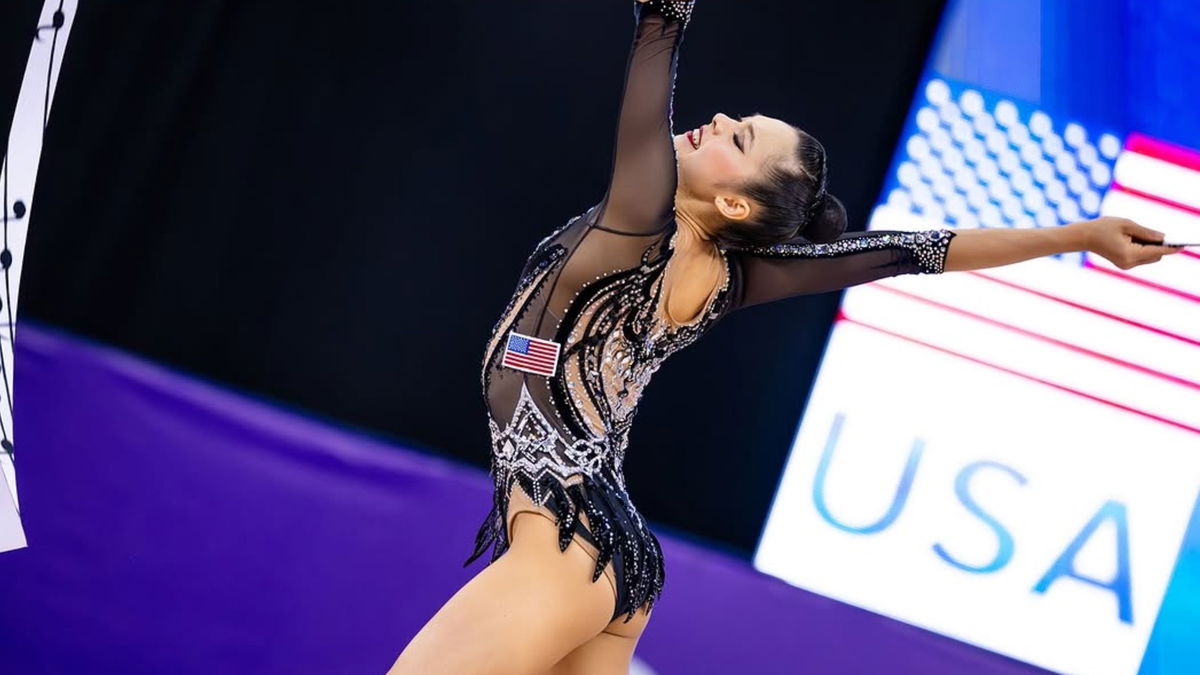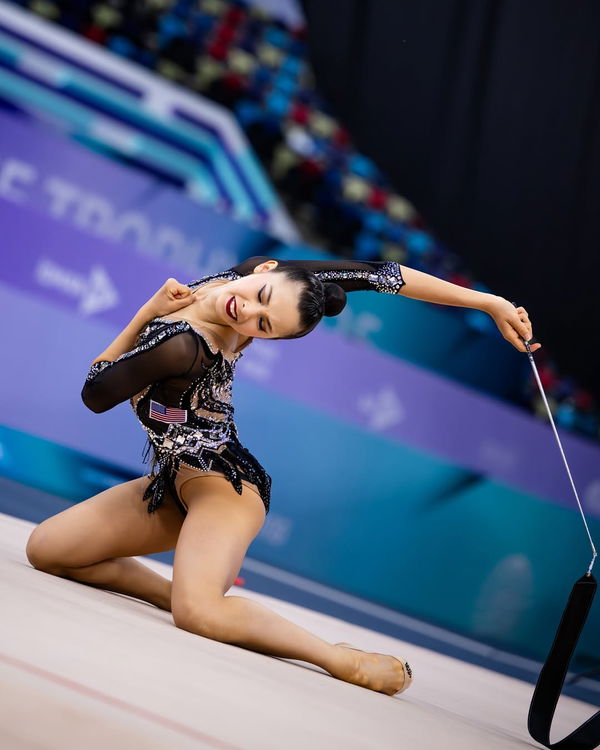
Imago
Rin Keys (Image Credits: Instagram/@rin_keys_rg)

Imago
Rin Keys (Image Credits: Instagram/@rin_keys_rg)
Not a single medal at the World Championships. For more than sixty years, American rhythmic gymnasts carried this burden. Since entering the competition in 1963, the United States had watched the rest of the world dominate, from Soviet dynasties to modern European powers. But this year in Rio, that long-standing curse is finally broken.
Watch What’s Trending Now!
Rin Keys, a teenager from Porter Ranch, California, stepped onto the floor and left with silver in the Ball final, the first U.S. rhythmic gymnast ever to stand on a world podium.
Her winning score of 29.050 placed her second behind Germany’s Darja Varfolomeev (29.850) and ahead of Italy’s Sofia Raffaeli (28.750), an achievement that etched her name into gymnastics history. Keys not only became the first American medalist, but also the first individual gymnast from outside Europe and Asia to reach the podium at a World Championships. She came close to doubling her success when she finished fourth in Hoop with a 29.200, missing bronze by only two tenths. In the All-Around, she closed seventh, the highest finish by an American since 2017, proving her silver was no isolated moment.
ADVERTISEMENT
Keys’ medal was the centerpiece of a broader U.S. delegation that included Megan Chu of San Diego and the Senior National Group. Together, the Americans placed 12th in the team standings with a combined total of 253.600 across the qualifying rounds. Germany led the field at 286.500, followed by Bulgaria at 281.550 and Ukraine at 278.550. For the group event, the Americans remained in the middle of the pack, but Keys’ individual results brought a dimension the program had never experienced before—credibility on the world level.
To understand the weight of this moment, one must recall how rhythmic gymnastics took shape.
In 1911, German educator Rudolf Bode established the Bode School for Rhythmic Gymnastics, which trained hundreds of teachers and contributed significantly to the discipline’s technical base. By 1946, rhythmic gymnastics was formally recognized as a women’s sport. The first World Championships took place in Budapest in 1963, the same year rhythmic gymnastics became an official International Gymnastics Federation discipline. A generation later, in 1984, the sport made its Olympic debut in Los Angeles with the individual all-around, while the group all-around was added in 1996.
ADVERTISEMENT

Imago
Rin Keys (Image Credits: Instagram/@rin_keys_rg)
Against that long backdrop, the United States remained absent from the medal ranks for more than fifty years of World Championships. While the Soviet Union, Bulgaria, Russia, Ukraine, and Italy accumulated trophies, American rhythmic gymnasts were left chasing relevance. Rin Keys has now altered that narrative.
ADVERTISEMENT
With her silver in Rio, she has not only broken a 62-year drought but also set a precedent for what the next chapter of U.S. rhythmic gymnastics might look like. Her performance ensures that the United States, once considered an outsider in this discipline, finally belongs in the record book. However, as it appears, Rin Keys is now way too habituated with grabbing wins. She reaffirmed her standing at the top of U.S. rhythmic gymnastics by securing her second straight senior all-around crown at the 2025 Rhythmic Challenge.
Rin Keys defended the senior all-around title with a dominant display in Lake Placid
Just months ago, in February of this year, Rin Keys left Lake Placid with a familiar prize in hand, collecting her second successive Rhythmic Challenge senior all-around crown.
ADVERTISEMENT
The reigning U.S. champion gathered a total of 112.100, a score built steadily through decisive victories in hoop (28.250), ball (27.350), and clubs (29.450), along with a bronze in ribbon (27.050). The return to the top of the podium underscored her ability to sustain excellence across every apparatus, rather than relying upon a single standout routine.

Imago
Rin Keys (Image Credits: Instagram/@rin_keys_rg)
Her consistency separated her once again from Megan Chu, who trailed narrowly in last year’s contest and repeated as silver medalist with 108.700, earning her own measure of distinction by capturing the ribbon title with a 27.550. Keys, by contrast, balanced control with precision, the same qualities that carried her to the all-around title in 2024. To stand above a peer group that continues to sharpen its routines speaks to the discipline and resilience at the core of her approach.
ADVERTISEMENT
The bronze went to Jaelyn Chin, whose performance confirmed the breadth of talent in the senior division. Yet the spotlight remained firmly on Keys, who demonstrated that retaining a national title demands as much composure as ambition.
Her 2025 campaign, punctuated by multiple apparatus victories in Lake Placid, showed not only the skill but the steadiness required to stay ahead of competitors who are pressing closer each season. For a gymnast already accustomed to the weight of expectation, this successful defense of her senior crown was a clear reminder of why she remains the standard in U.S. rhythmic gymnastics.
ADVERTISEMENT
ADVERTISEMENT
ADVERTISEMENT

